Tate and the Pink Coat: Exploring Gender and Enacting Anti-Bias Principles
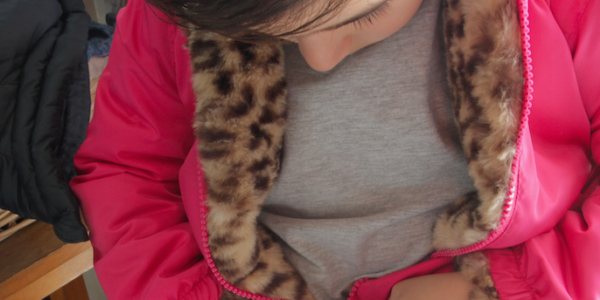
You are here
Mittens and boots fly as 3-year-olds bundle up to adventure out into the winter snow. Tate, ready to go in the middle of the line, stands with no coat and bare arms. When Ms. Tiana, one of his teachers, approaches, Tate quietly shares that he did not have a coat he could wear to school that morning. She assures him that there are plenty of extra coats he can choose from for the day.
“Wow, this looks beautiful, and it’s so fuzzy!” Tate says. He glows as he shows off the bright pink coat he’s found in the box of extra outdoor clothing. It is a puffy coat complete with a faux fur leopard lining.
“No, no, that’s a girl coat; I’m sure we have another you can use,” Ms. Diane, another teacher, says. As she digs back into the box, Tate’s face fills with embarrassment and shame. The only “boy” coat in the collection is dark blue and several sizes too small. When Tate tries it on, his discomfort is evident. “This one’s too tight,” he says. Seeing this interaction, Ms. Tiana steps in and assures Tate that he is welcome to wear any coat he chooses, including the pink one. Tate smiles, snatches up the pink coat, and hops back into line with his friends.
The example above demonstrates Ms. Tiana working to create a gender-inclusive space for Tate as he selects the jacket he prefers. Gender-inclusive spaces allow children to easily move between roles or materials commonly regarded as male or female without any gendered expectations or barriers. For nearly thirty years, proponents of anti-bias education have reminded us that “it is not human differences that undermine children’s development but rather unfair, hurtful treatment based upon those differences” (Derman-Sparks & Edwards 2010, 3). Children’s emotional safety may be compromised when adults or peers express disapproval of young children for supposedly incorrect gender expressions (Chrisman & Couchenour 2003). In this article, we argue that by working to create inclusive classroom environments and thus modeling acceptance of gender exploration in the early childhood classroom, we allow children the freedom to be their most authentic selves, regardless of how they come to identify themselves as adults.

Gender-inclusive classrooms promote an anti-bias atmosphere in which all children can explore and grow. Creating a space that promotes equity, safety, and respect for all members of a classroom community is a hallmark of good teaching and school leadership (Derman-Sparks & Edwards 2010; Mosso-Taylor 2016; Kroeger & Regula 2017). However, from early childhood through high school, children who do not conform to traditional gender roles and forms of expression are likely to be harassed, bullied, or physically assaulted—and all too often, teachers and administrators ignore these instances of harassment (Kosciw et al. 2012).
Youth who do not conform to traditional ideas about gender are less likely to finish high school or college, are overrepresented among homeless youth, and are more likely to have mental health concerns than their gender-conforming peers (Choi et al. 2015). Given these challenging social problems, we believe it is never too early to positively support young children’s gender exploration and expression. Even in the most innocent-seeming moments, such as Tate’s selection of a pink coat, our words and actions may affect children’s emotional, social, and identity development.
We believe it is never too early to positively support young children’s gender exploration.
For many years, anti-bias practices related to gender have tended to emphasize promoting a non-sexist atmosphere (Derman-Sparks & ABC Task Force 1989; Derman-Sparks & Edwards 2010; Campbell, Smith, & Alexander 2016). As Tate’s story makes clear, however, combating sexism is only one small part of creating a gender-inclusive classroom. This article advances conversations about gender diversity and anti-bias education. It supports children and teachers in challenging gender-related bias, examining its personal consequences, and countering the “negative effects of bias on children, themselves, and their communities” (Gunn 2003, 132).
In this article, we use Tate’s choice of the pink coat to discuss the practical underpinnings of gender and anti-bias decision-making in the classroom. We hope that after reading this article, teachers will be better equipped to work through their own biases before responding to young children who are exploring gender in nontraditional ways. Additionally, we hope to help teachers reflect on how seemingly minor things, such as a collection of pink dress-up clothes or a block area adorned mostly with dinosaurs and trucks, might feel like barriers for children who wish to play outside of stereotypical gender roles.
Gender-inclusive classrooms promote an anti-bias atmosphere in which all children can explore and grow.
Considering how to engage with children in more supportive and inclusive ways can start with learning gender concepts, intentionally reworking classroom materials, and being more thoughtful about communicating with children and families. We explore these three strategies in detail; for more ideas, see “Supporting Gender Diversity in Your Classroom”.
Supporting Gender Diversity in Your Classroom
These recommendations for educators are intended to support teachers and children in creating an inclusive classroom community.
- Reflect on your own personal understandings of gender. Think about the materials in your class and if they are gender inclusive. Are there any you might change?
- Consider to what extent you model acceptance of gender exploration and how you support children’s acceptance of each other.
- Give children opportunities to share their feelings about gender. Discussing these topics in the classroom helps children learn to challenge narrow concepts of gender in respectful, constructive ways.
- Answer children’s questions about gender. Respecting children’s inquiries extends their understanding and shows them that gender exploration is valued in the classroom.
- Help children recognize that people are members of groups and also unique individuals; this supports children’s identity development (and reinforces their understanding that gender identity is one of many facets of their overall identity). Celebrate children’s individual strengths and interests and acknowledge the human characteristics that unite all of us (e.g., the need for love, respect, and compassion).
- Give children accurate language and terms. When teachers enhance children’s talk about gender with proper terminology, children increase their comfort levels with gender concepts and their abilities to explore them.
- Respect young children’s descriptions of themselves, such as “I’m a boygirl!”or “Today, I am going to be the princessboy.”
- If children try to restrict each other’s play or use biased language, remind them you encourage everyone to play, explore, and express themselves freely, and that as long as children are not hurting each other, you believe each should be allowed to play with what is most interesting to them.
Learning gender concepts
Ideas about gender and sexuality are constantly evolving. They overlap with anti-bias principles and can be confusing to educators (and families) (Derman-Sparks & ABC Task Force 1989; Derman-Sparks, LeeKeenan, & Nimmo 2015). Learning some terminology and current thinking about gender constructs can help.
The term gender brings together three notions—an individual’s assigned gender (done at birth based on physical appearance), gender identity, and gender expression (Killermann 2018; Newman 2016; Human Rights Campaign 2017). The traditional view of gender is binary—male or female. Babies are assigned male or female at birth, and then are expected to identify and express themselves as such throughout their lives (Gunn & MacNaughton 2007). In contrast, more current thinking on gender is expansive. Rather than a binary notion or even a continuum (masculine to feminine), gender is considered multifaceted, interrelated with other aspects of one’s identity (e.g., spiritual beliefs, race), and may be fluid (i.e., for some people gender identity is not fixed) (Ehrensaft 2012; Kroeger & Regula 2017). Note that this discussion of gender is not a discussion of sexuality, which is a separate concept regarding sexual and romantic attraction. In popular culture, concepts of gender and sexuality are often conflated (Gunn 2011). Neither gender identity nor gender expression determines sexual orientation (i.e., attraction).
When teachers reflect deeply on their understandings of gender, they can make more informed decisions and create opportunities to address inequity and bias.
In many ways, our society has already abandoned many of its more traditional ideas about gender—for example, we’ve accepted that women can be scientists and men can be nurses, moving away from the idea that certain behaviors, skills, and abilities are associated only with certain genders. But current thinking on gender goes further; it lets go of the idea that gender assigned at birth, gender identity, and gender expression must align and must stay the same over time. For example, a child assigned female at birth may identify as female but often choose to wear outfits (a facet of gender expression) that our society sees as male, like plaid shirts and cargo shorts; or a child assigned male at birth may identify as female but choose to wear plaid shirts and cargo shorts to avoid being bullied. As children mature, their gender identities and preferred forms of expression may change (Ehrensaft 2012; NASP 2014). Exploration of gender in the early years helps children form and reform their gender identities, discovering their interests and the many ways they can express themselves (Ehrensaft 2012; Kroeger & Regula 2017). Throughout children’s explorations and changes, it is important for teachers, families, and other caregivers to remain open, responsive, and supportive.
Many educators find it helpful to study gender terminology and visual models of gender concepts (Human Rights Campaign 2017; Killermann 2018). Two websites we recommend with such resources for teachers of young children are GLSEN (www.glsen.org/article/gender-terminology) and Gender Justice in Early Childhood (www.genderjusticeinearlychildhood.com).
Reexamining the pink coat scenario
Opening up opportunities for children to express their gender more freely and reducing gender barriers (or biases) requires teachers to reflect critically on their thinking and practice (Derman-Sparks, LeeKeenan, & Nimmo 2015). Pedagogical change is more likely to succeed when teachers choose to make a change than when it is imposed on them by external policy demands (Gunn & MacNaughton 2007). When teachers reflect deeply on their personal understandings of gender, they can begin to make more informed decisions and create opportunities to address inequity and bias. Learning to support gender exploration in the classroom enables teachers to ensure that children feel safe and acquire more sophisticated understandings about gender as they learn and grow.
Reflecting on Tate’s experience, we can see that what his two teachers personally defined as appropriate (or inappropriate) for young children guided their actions. We could say that for Ms. Tiana, Tate’s sense of self, of autonomy, and of belonging in the classroom were prioritized. At first glance, it seems that for Ms. Diane conformity to traditional gender expression was more important than Tate’s desire, warmth, or comfort—but perhaps she had not taken the time to examine her own biases or misconceptions surrounding gender. In any case, Ms. Diane’s actions reinforced expectations for conformity to the gender expressions typically promoted in our broader society.
When we engage with children, we are constantly emitting subtle cues, whether we are conscious of our biases and values or not. Ms. Diane may have been worried about negative judgments from other teachers or from Tate’s parents, or perhaps about other children teasing Tate. In other words, she may have been motivated by concern for Tate’s emotional safety. She may also have felt an internal discomfort with Tate’s choice and acted impulsively, unaware of the messages (e.g., boys don’t wear pink) she might have conveyed to Tate and his peers.
Increasingly, work from mental health fields (including school psychology) indicates that it is important for young children to be able to explore gender in their earliest years by playing with their appearance (e.g., hairstyle, makeup, clothing, jewelry). This enables children to understand how external appearance or aspects of gender expression may or may not match internal gender identity or assigned biological sex (Ehrensaft 2012; NASP 2014). This is especially relevant for children who are engaging in nontraditional gender expressions and play, and all the more so for children who remain engaged in such expressions throughout childhood. Approaching children neutrally or affirmatively, as Ms. Tiana did, also creates space for children to freely and fully explore their interests. Ms. Tiana’s actions led to Tate’s emotional security, shown by his smile and his quickly lining up to play outside.
Reworking classroom materials
When teachers establish classroom spaces that support the traditional binary concept of gender (for example, putting the boys’ photos and names on blue paper and the girls’ on pink paper), they may inadvertently reinforce children’s stereotyped constructions of gender and unintentionally create social conditions that limit children to traditional gender roles (Gosselin 2007; Chrisman & Couchenour 2003). To create neutral spaces for exploration, educators need to acknowledge how gender limitations and biases might exist in classrooms and deliberately avoid and/or counteract them (Freeman 2007; Sullivan 2016).
Offering open-ended materials
Materials are among the most important aspects to consider when creating an inclusive, gender-neutral classroom. We encourage teachers to select materials that invite exploration without imposing gender expectations. For example, one simple change is to avoid objects that reinforce gendered play, like those that suggest pink is for girls and blue is for boys. Toys and objects with neutral color palettes, such as an unpainted wooden doll house with gender-nonspecific figures, may help children feel more welcome to explore various roles, labels, and activities in their play. These neutral materials also enable more creative play, as children can decorate the house and design outfits for the figures.
Stocking the classroom with found materials and loose parts can encourage play that isn’t limited by traditional understandings of gender.
Even when materials are specifically chosen (or created) for their neutrality or representational ambiguity, children bring their own expectations, assumptions, experiences, and memories to their play. One way that teachers may begin broadening children’s perspectives is by incorporating more open-ended materials into classroom spaces. Fabrics of various colors and textures are an exciting alternative to premade tutus or firefighter jackets—and (like an unpainted dollhouse) they challenge children to engage in more creative play. Children can use fabrics to transform into any character and apply them to any dramatic play context, which can help reduce play fraught with gender expectations.
Stocking the classroom with found materials and loose parts (such as pinecones, cardboard boxes and tubes, wire, buttons, twine, and gears) can be another imaginative and inexpensive way to encourage play that isn’t limited by traditional understandings of gender. Creating a gender-neutral makerspace with natural materials, for example, can inspire children to create sculptures, make books, piece together collages, or construct whatever they imagine. They may also create props of their own liking with these materials to enhance storylines they have created. These new materials and spaces can be presented as formal activities or as enticing provocations. When children see new opportunities for play and exploration that do not carry signals about gender, they may feel more welcome to engage and to collaborate with children they might not otherwise play with, breaking down gender barriers.
Selecting books and images
Thoughtfully choosing children’s books is another way to contradict stereotypical gender roles. By incorporating and discussing books that depict characters whose gender identities and expressions are multifaceted, fluid and/or ambiguous, teachers can help children expand their understanding of what it means to be male, female, neither, or both. Sharing books that model positive reactions to gender exploration and nontraditional play in the classroom sends a message to the community of learners and advances the anti-bias principle of transformation for all (Gunn 2003; Sullivan 2016).
Supporting Explorations of Gender with Children’s Books
These books help children develop an expansive, inclusive understanding of gender for ages preschool to third grade.
Ada Twist, Scientist
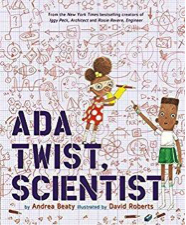
By: Andrea Beaty, Illustrated By: David Roberts
A young scientist constantly questions the world around her. Her determination and love of science show that anyone can make discoveries.
Dancing to Freedom: The True Story of Mao’s Last Dancer

By: Li Cunxin, Illustrated by: Anne Spudvilas
This book tells the life story of Li Cunxin. As a young boy from a poor family in China, he dreamed of becoming a dancer. He was selected from millions to dance at the Beijing Dance Academy, where his career began.
The Bat Boy & His Violin
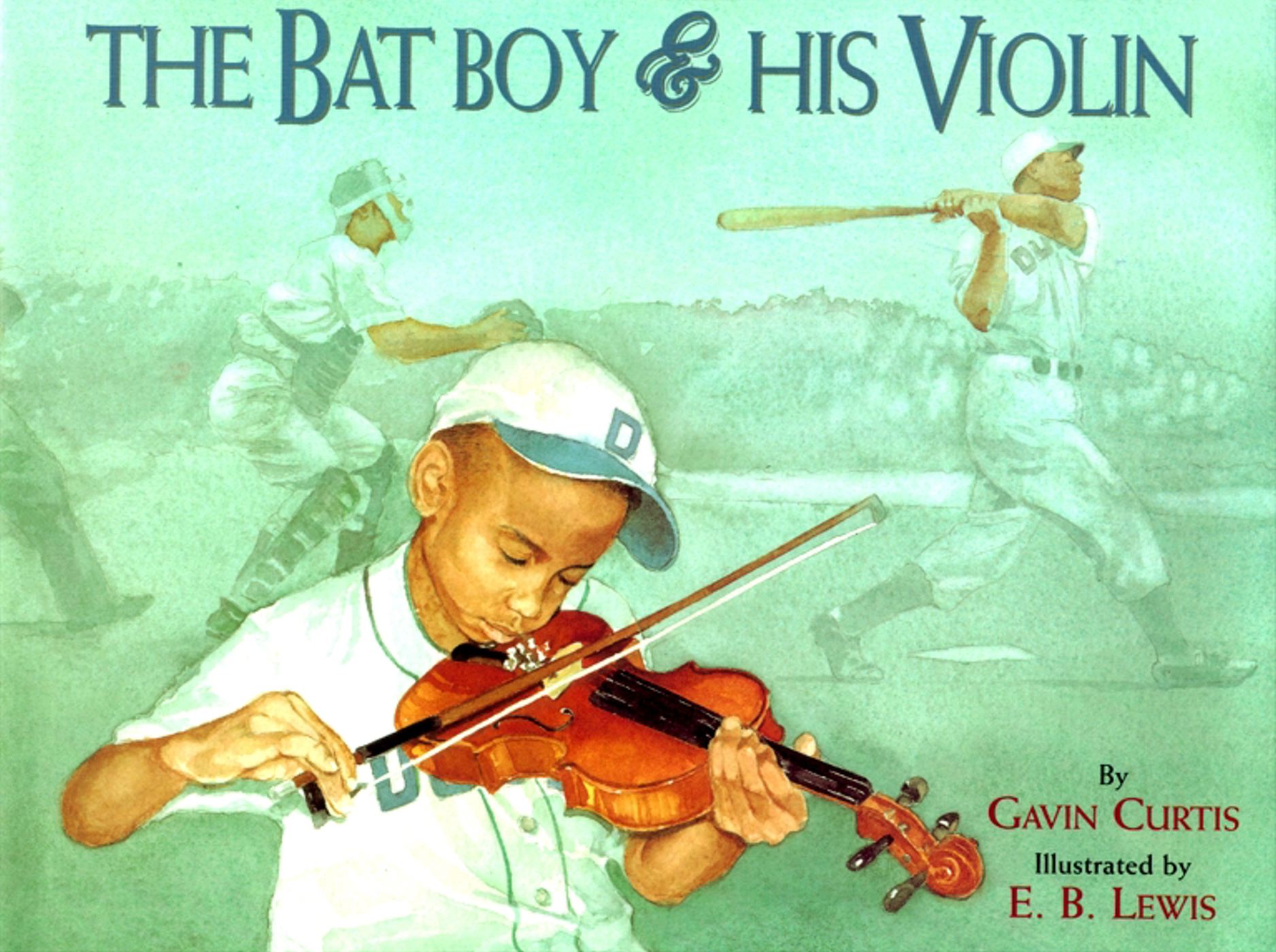
By: Gavin Curtis, Illustrated by: E.B. Lewis
Reginald’s love of playing his violin puts him at odds with his father, the manager of a national baseball team. However, as the team struggles to win in the segregated South, the music Reginald brings transforms their team spirit to save their season, making him the best bat boy a team could have.
Annie’s Plaid Shirt
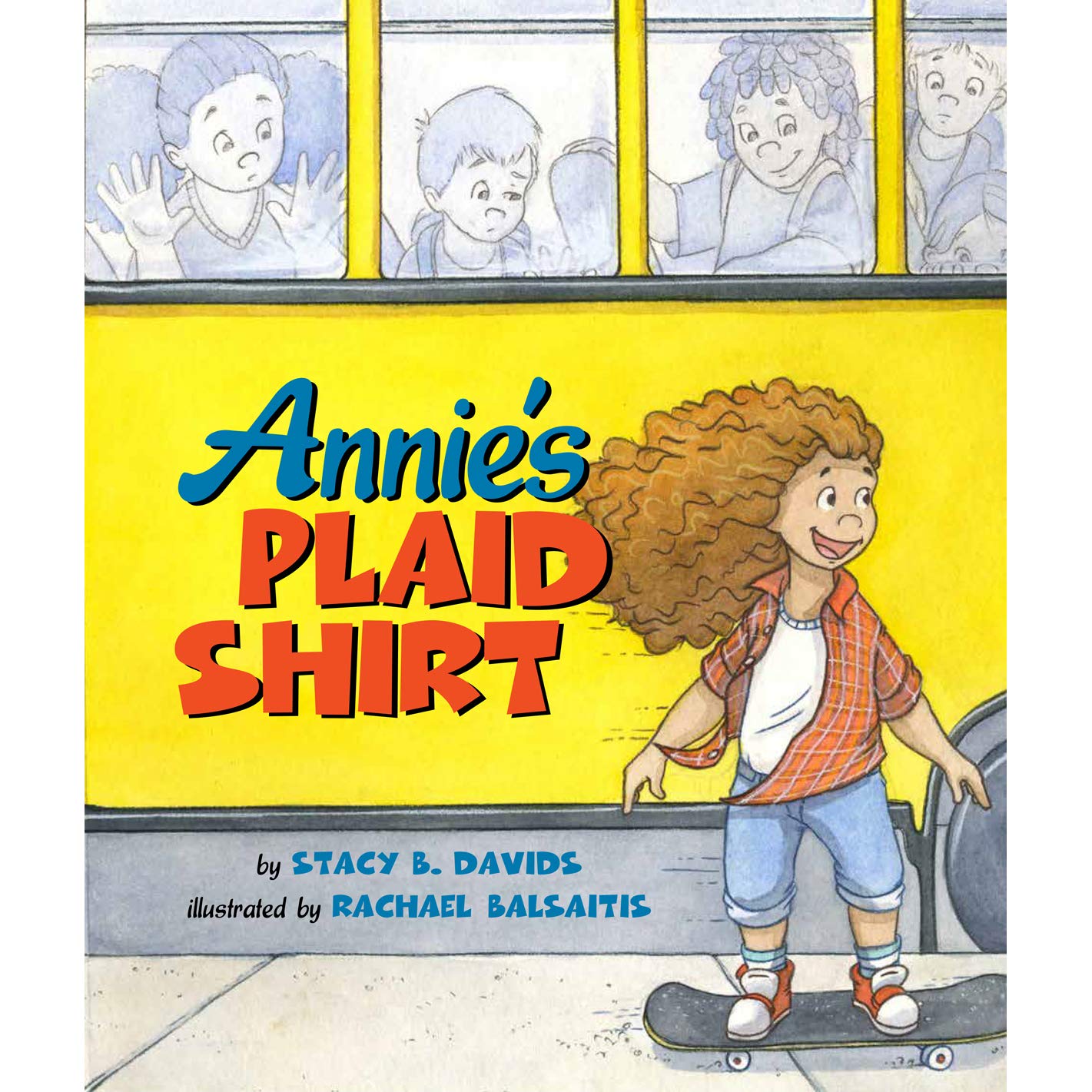
By: Stacy B. Davids, Illustrated by: Rachael Balsaitis
Annie loves her plaid shirt and wears it all the time. When she has to dress up for her uncle’s wedding, she and her mom negotiate the clothing she is happiest in. Annie shares her feelings and her family understands her and lets her be herself.
Red: A Crayon’s Story

By: Michael Hall
When a color in a box of crayons is mislabeled, it goes through an identity crisis and must learn how to be true to who it is on the inside
I Am Jazz
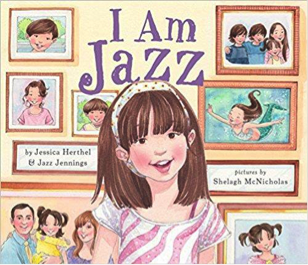
By: Jessica Herthel & Jazz Jennings, Illustrated by: Shelagh McNicholas
Jazz Jennings’ autobiographical picture book explains for young readers what it means to be transgender in simplified and appropriate language.
Jacob’s New Dress
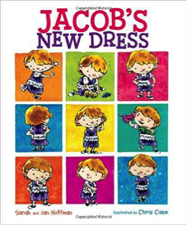
By: Susan Hoffman, Illustrated by: Ian Hoffman
Jacob loves to wear dresses. Not everyone at school thinks Jacob should be allowed to wear “girls’ clothes,” but with the support and help of the teacher Jacob finds acceptance.
I Dissent: Ruth Bader Ginsburg Makes Her Mark
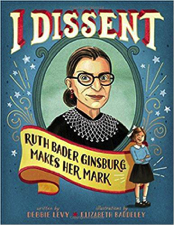
By: Debbie Levy, Illustrated by: Elizabeth Baddeley
Supreme Court Justice Ruth Bader Ginsburg shows children what it means to fight for what you believe in, even if it means disagreeing with others around you.
Julián is a Mermaid

By: Jessica Love
The colorful and powerful illustrations in this book tell the story of Julián. He is a young boy who loves mermaids more than anything else. When he expresses this love to his abuela, she begins to understand Julián in a new way and offers her own wonderful props for mermaid dress-ups.
The Paper Bag Princess
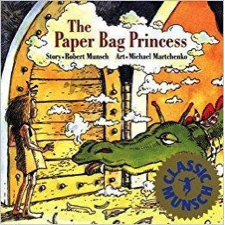
By: Robert Munsch, Illustrated by: Michael Martchenko
Gender roles are reversed in this fairytale twist when the princess saves the day for a helpless prince.
A Fire Engine for Ruthie
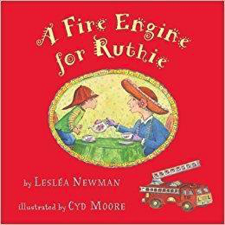
By: Leslea Newman, Illustrated by: Cyd Moore
Ruthie loves her fire truck. Even though Nana wants her to play with dolls and dress-up clothes, Ruthie learns how to share what she loves with her Nana.
Who Are You? The Kid’s Guide to Gender Identity
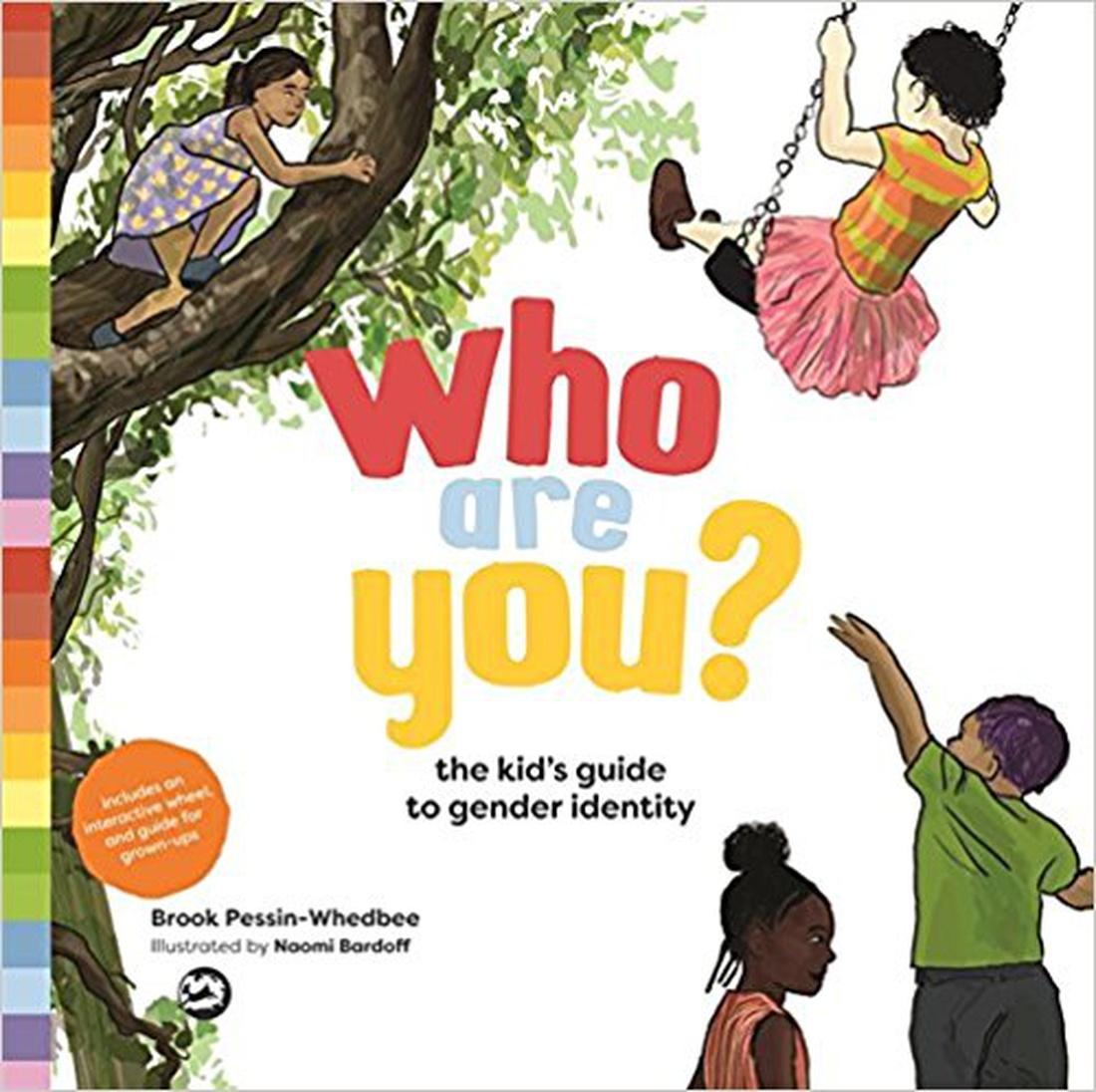
By: Brook Pessin-Whedbee, Illustrated by: Naomi Bardoff
This book provides children with a straightforward introduction to the concepts of gender identity, gender expression, and personal interests. Terminology within these topics is simplified with supporting illustrations and examples.
School Picture Day
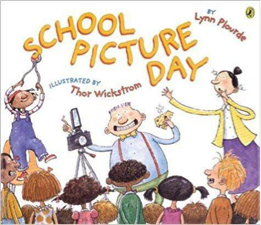
By: Lynn Plourde, Illustrated by: Thor Wickstrom
School picture day is almost ruined when the photographer’s camera stops working. Young Josephine steps in to save the day. She uses her love of taking things apart to solve a problem that no one else can.
Made by Raffi
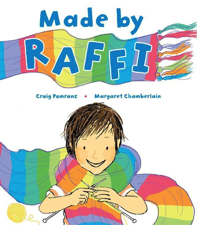
By: Craig Pomranz, Illustrated by: Margaret Chamberlain
Raffi discovers a passion and talent for knitting. Although at first many don’t understand why a boy would love such a hobby, they soon appreciate and celebrate his creativity.
The Boy & the Bindi

By: Vivek Shraya, Illustrated by: Rajni Perera
When a young boy becomes fascinated with his mother’s bindi, he learns about his culture and is blessed by his mother with a bindi all his own.
William’s Doll
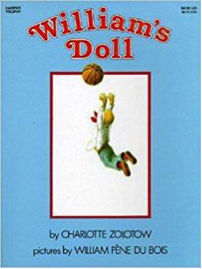
By: Charlotte Zolotow, Illustrated by: William Pene Du Bois
More than anything else, William wants a doll to play with. Although his friends and father say that playing with a doll makes William a “sissy,” Grandma helps everyone understand William’s feelings and make his wish come true.
In addition to literature, images depicting diverse gender expressions and roles people take around the world can be a valuable classroom resource. Teachers can display photographs or illustrations that show clothing, occupations, and lifestyles around the globe that contrast with Western societies’ traditional gender roles and expressions. For example, a teacher might display pictures of men and women in flowing fabrics or skirts (such as kilts or various types of sarongs, which are common in many parts of the world) to support male children who might enjoy trying on all of the different types of clothing in the dramatic play center. Photos showing the ways gender roles and expressions differ around the world contribute to children’s understanding that gender is a social construct rather than a fixed and universal set of ideas, values, or behaviors.
Communicating with care
Young children do not have a negative view of others’ diverse gender play unless someone communicates to them that it is inappropriate. Teachers’ actions and words help shape the classroom culture and tell children how teachers feel about gender and gender exploration (Cahill & Theilheimer 1999). If children are given the autonomy to define—and redefine—their identities as they grow, rather than taking up our society’s traditional gender expectations, biases may be reduced. If children do not condemn each other but see teachers allowing diverse gender expressions, biases may be reduced (Kroeger, forthcoming).
Acting and speaking inclusively
Teachers’ actions and words help shape the classroom culture and tell children how teachers feel about gender barriers and gender exploration (Cahill & Theilheimer 1999). Inclusive practices and language help children who are engaging in nontraditional expressions of gender feel safe and welcome, and they also help their peers be accepting.
Exploring gender in the early years helps children form and reform their gender identities, discovering their interests and the many ways they can express themselves.
To remove gender bias from classroom practices and routines, teachers should examine their expectations for children and make sure all children are supported in using the most challenging materials. All children can excel in subjects such as math, science, engineering, reading, writing, and the arts. Predisposing particular children to play with materials that enhance knowledge and skills in certain subject areas—for example, guiding boys (but not girls) to play with construction materials that include gears and motors—perpetuates gender bias. By mindfully redistributing play materials and encouraging all children to pursue activities of different types, teachers can reinforce opportunities to play in gender-neutral, inclusive ways.
Similarly, teachers should beware of stereotyping classroom responsibilities. Ensure that all children participate in classroom routines (such as cleaning, carrying supplies, cooking, preparing snacks, and taking care of one another and materials), in outdoor and nature play (including climbing and other adventuresome activities), and in movement and music.
Carefully reflecting on the language used with children is also essential for reducing gender bias and ensuring that teachers are not inadvertently communicating unbalanced or restrictive expectations. Research has shown that girls tend to receive more comments related to their appearance and kind touch than any other communicative feedback, while boys are frequently acknowledged for showing strength or lack of emotion (Chick, Heilman-Houser, & Hunter 2002). Similarly, addressing boys as “little dude” or girls as “honey” perpetuates the view that young boys should be tough and young girls should be sweet. To avoid reinforcing these biases, teachers may want to spend a few minutes at the end of each day recalling and reflecting on how they spoke with different children in their classrooms. With time and effort, teachers can change their ways of speaking with children. One simple first step is to refer to children by their preferred names instead of other terms like “sweetie.” When addressing an entire group of children, use neutral terms, such as “everyone,” “children,” “preschoolers,” or “Room 9” instead of “boys and girls.”
While singular instances of stereotype-reinforcing communications from adults might not impact a child, frequent use of biased language may compound over time to shape the ways in which children view themselves, others, and society’s expectations about gender. A young girl who receives comments on her neatly braided hair every morning may come to think that she has a responsibility to make sure her hair is well groomed and visually appealing. This may cause her to internalize the belief that her physical appearance is the only aspect of her identity that matters to others. A boy repeatedly praised for his tough demeanor may not allow himself to express a range of emotions, resulting in his being perceived as lacking compassion or empathy for others or for himself (Rao & Seaton 2009). A child like Tate, who may or may not identify as a boy or girl and whose interests are often frowned on, may come to believe that a person has to fit neatly into a category in order to be valued.
Like all anti-bias efforts, changing how one feels, thinks, and talks about gender takes time. With reflection and practice, early childhood educators can remove gendered assumptions and messages from their language, making their classrooms more welcoming—and truly enabling children to explore their interests.
Fostering partnerships with families
Creating safe and inclusive spaces for children exploring gender may also impact the children’s families. Teachers can encourage parents to be accepting of children’s playful gender exploration (Kroeger & Regula 2017), and administrators can ensure educational settings are welcoming for children who do not identify with their gender assigned at birth (Kroeger, forthcoming; Mosso-Taylor 2016). When families feel that their children are respected and accepted, they are more likely to become active members of the classroom community (DeVries & Zan 2012).
If family members struggle to understand a child’s nontraditional gender play or expression, a teacher’s knowledge of basic concepts related to gender (and sexuality) may prove a valuable resource for supporting the family. With a teacher’s understanding and with access to appropriate current resources (such as those provided by GLSEN and Gender Justice in Early Childhood), families can be coached on strategies to help make the home a safe haven for their children (Gender Spectrum 2018). By sharing resources with families, teachers can extend anti-bias practice beyond the classroom walls to encourage healthy development in all parts of a child’s life.
Here are some additional tips for engaging with families:
- Take your time building engagement among families on the topic of gender. Recognize that communities and families will differ in their readiness for rethinking gender; be conscious of pushing too fast.
- Recognize cultural influences on gender (such as a family’s religious beliefs), and try to find common ground with a wide variety of community members.
- Draw on what children notice and ask about regarding gender in the classroom to inform conversations with families, including conversations about the various roles associated with gender in their homes or communities.
- Be willing to answer or discuss family members’ questions about gender openly and honestly. Model lifelong learning for families by sharing how you are exploring and deepening your own understanding of gender. If possible, arrange a workshop with local experts to support families with a desire to learn more about gender.
- Consider the safety of children and families who confide in you and take care not to betray their trust, whether or not you agree with the ideas they have expressed.
- Learn about local issues and politics; reflecting on communities from multiple perspectives may influence your strategies for making change.
Conclusion
As early childhood educators learn about current thinking on gender, work to eliminate gender bias, and reflect on their classroom materials and practices, they can embrace the development of gender-inclusive communities. We believe that working to create safe spaces for gender exploration is essential to advancing anti-bias education.
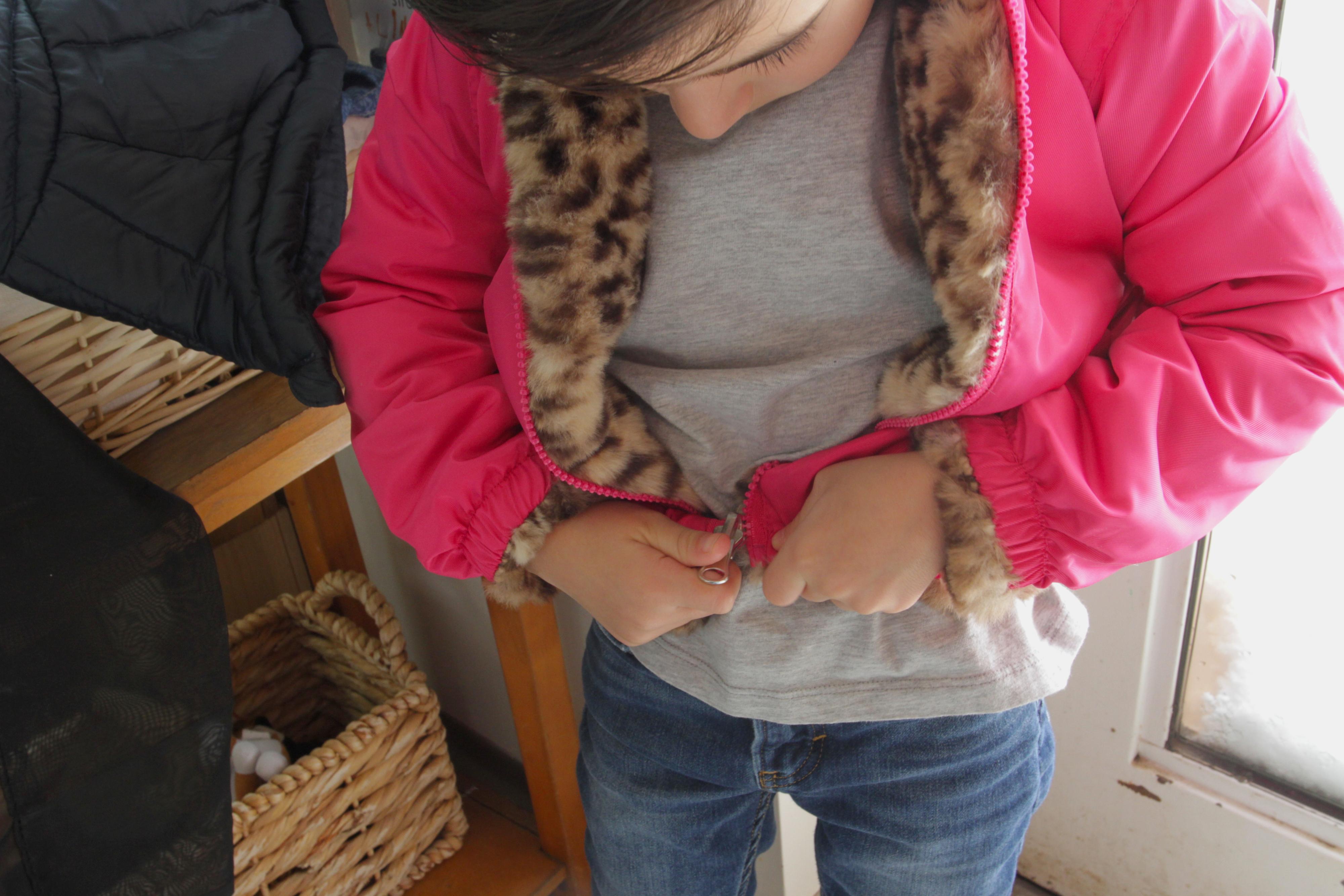
By encouraging children to play freely, without regard to traditional gender limitations or biases, teachers can provide children who express gender in nontraditional ways with many opportunities to learn about gender fluidity, express themselves in different ways, and understand their developing sense of identity. With sensitive support from teachers, those children’s peers will learn that they too can play as they wish, and that they can accept their classmates no matter what toys or roles they find interesting.
Within the field of early education, much of the previously accepted wisdom about gender has guided teachers to stay within boundaries that are historically stereotypical and unwelcoming to many young children. With anti-bias principles in mind, teachers can reflect on gender and rethink their actions. Recognizing their own and other’s gender biases and beliefs allows educators to consciously counteract inequity in their practices, classroom materials, and language.
It’s time to let Tate wear the pink coat.
References
Cahill, B., & R. Theilheimer. 1999. “‘Can Tommy and Sam Get Married?’ Questions about Gender, Sexuality, and Young Children.” Young Children 54 (1): 27–31.
Campbell, S.S., K. Smith, & K. Alexander. 2016. “The Gender Factor: Continuing the Dialogue.” In The Anti-Bias Approach in Early Childhood, ed. R.R. Scarlet, 41–50. Sydney, AU: MultiVerse Publishing.
Chick, K.A., R.A. Heilman-Houser, & M.W. Hunter. 2002. “The Impact of Child Care on Gender Role Development and Gender Stereotypes.” Early Childhood Education Journal 29 (3): 149–54.
Choi, S.K., B.D.M. Wilson, J. Shelton, & G. Gates. 2015. Serving Our Youth 2015: The Needs and Experiences of Lesbian, Gay, Bisexual, Transgender, and Questioning Youth Experiencing Homelessness. Los Angeles, CA: The Williams Institute.
Chrisman, K., & D. Couchenour. 2003. “Developing Concepts of Gender Roles.” Chap. 29 in A World of Difference: Readings on Teaching Young Children in a Diverse Society, ed. by C. Copple, 116–17. Washington, DC: National Association for the Education of Youth Children (NAEYC).
Derman-Sparks, L., & ABC Task Force. 1989. Anti-Bias Curriculum: Tools for Empowering Young Children. Washington, DC: NAEYC.
Derman-Sparks, L., & J.O. Edwards. 2010. Anti-Bias Education for Young Children and Ourselves. Washington, DC: NAEYC.
Derman-Sparks, L., D. LeeKeenan, & J. Nimmo. 2015. Leading Anti-Bias Early Childhood Programs: A Guide for Change. New York: Teachers College Press.
DeVries, R., & B. Zan. 2012. Moral Classrooms, Moral Children: Creating a Constructivist Atmosphere in Early Education. 2nd ed. New York: Teachers College Press.
Ehrensaft, D. 2012. “From Gender Identity Disorder to Gender Identity Creativity: True Gender Self Child Therapy.” Journal of Homosexuality 59 (3): 337–56.
Freeman, N.K. 2007. “Preschoolers’ Perceptions of Gender Appropriate Toys and Their Parents Beliefs about Genderized Behaviors: Miscommunication, Mixed Messages, or Hidden Truths?” Early Childhood Education Journal 34 (5): 357–66.
Gender Spectrum. “Parenting and Family.” 2018. www.genderspectrum.org/explore-topics/parenting-and-family.
Gosselin, C. 2007. “Philosophy and the Role of Teacher Reflections on Constructing Gender.” Educational Foundations 21 (3/4): 39–57.
Gunn, A.C. 2003. “A Philosophical Anchor for Creating Inclusive Communities in Early Childhood Education: Anti-Bias Philosophy and Te Whāriki – Early Childhood Curriculum.” Waikato Journal of Education 9: 129–141.
Gunn, A.C. 2011. “Even If You Say It Three Ways, It Still Doesn’t Mean It’s True: The Pervasiveness of Heteronormativity in Early Childhood Education.” Journal of Early Childhood Research 9 (3): 280–290.
Gunn, A., & G. MacNaughton. 2007. “Boys and Boyhoods: The Problems and Possibilities of Equity and Gender Diversity in Early Childhood Settings.” In Theorising Early Childhood Practice: Emerging Dialogues, ed. by L. Keesing-Styles & H. Hedges, 121–136. Castle Hill, NSW: Pademelon Press.
Human Rights Campaign. 2017. “Glossary of Terms.” www.hrc.org/resources/glossary-of-terms.
Killermann, S. 2018. “Comprehensive* List of LGBTQ+ Vocabulary Definitions.” http://itspronouncedmetrosexual.com/2013/01/a-comprehensive-list-of-lgbt....
Kosciw, J.G., E.A. Greytak, M.J. Bartkiewicz, M.J. Boesen, & N.A. Palmer. 2012. The 2011 National School Climate Survey: The Experiences of Lesbian, Gay, Bisexual, and Transgender Youth in Our Nation’s Schools. New York: Gay, Lesbian & Straight Educator Network (GLSEN).
Kroeger, J. Forthcoming. “School Community Partnerships for Full Inclusion(s) of LGBTQI Youth and Families.” In The Handbook of School-Family-Community Partnerships, ed. by S.B. Sheldon & T. Taylor-Vorbeck. New York: Springer.
Kroeger, J., & L. Regula. 2017. “Queer Decisions in Early Childhood Teacher Education: Teachers as Advocates for Gender Non-Conforming and Sexual Minority Young Children and Families.” In “Confronting and Countering Bias and Oppression through Early Childhood Policy and Practice,” ed. by F. Farago, C. Murray, & B.B. Swadener. Special issue, The International Critical Childhood Policy Studies Journal 6 (1): 106–121.
Mosso-Taylor, S. 2016. “Humanity, Heart, and Praxis: Foundations of Courageous Leadership.” Chap. 13 in Courageous Leadership in Early Childhood Education, ed. by S. Long, M. Souto-Manning, & V.M. Vasquez, 150–62. New York: Teachers College Press.
NASP (National Association of School Psychologists). 2014. “Safe Schools for Transgender and Gender Diverse Students.” Position statement. Bethesda, MD: NASP.
Newman, B. 2016. “Mother Goose Goes to Mardi Gras: Connecting with LGBT+ Families and Children.” In The Anti-Bias Approach in Early Childhood, ed. R.R. Scarlet, 51–68. Sydney, AU: MultiVerse Publishing.
Rao, A., & M.D. Seaton. 2009. The Way of Boys: Promoting the Social and Emotional Development of Young Boys. New York: HarperCollins.
Sullivan, A.L. 2016. “Kindergartners Studying Trans* Issues through I Am Jazz.” Chap. 4 in Teaching, Affirming, and Recognizing Trans and Gender Creative Youth: A Queer Literacy Framework, ed. sj Miller, 63–80. New York: Palgrave Macmillan US.
Photographs: courtesy of Casey Y. Myers
Janice Kroeger, PhD, is associate professor and graduate coordinator of early childhood education at Kent State University in the College of Health, Education, and Human Services. Janice has contributed to inclusive practices for young children, families, and communities while enacting teacher education, curriculum, and research. [email protected]
Abigail E. Recker, MEd, is a pre-K–grade 3 teacher in Orono, Maine. Abigail’s research focuses on fostering a culturally sustaining community of learners through authentic inquiry in elementary settings. [email protected]
Alexandra C. Gunn, EdD, is associate professor of education and associate dean of teacher education at the University of Otago College of Education. Alex is an early childhood teacher by profession and studies widely in the field. [email protected]